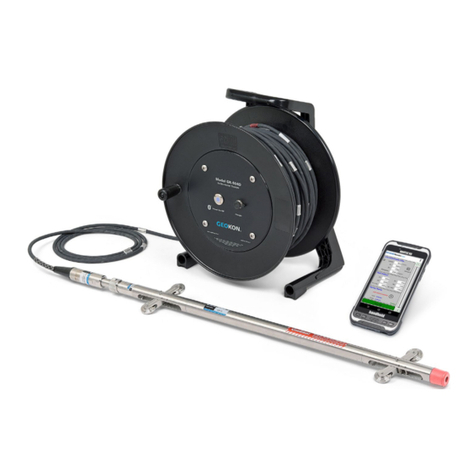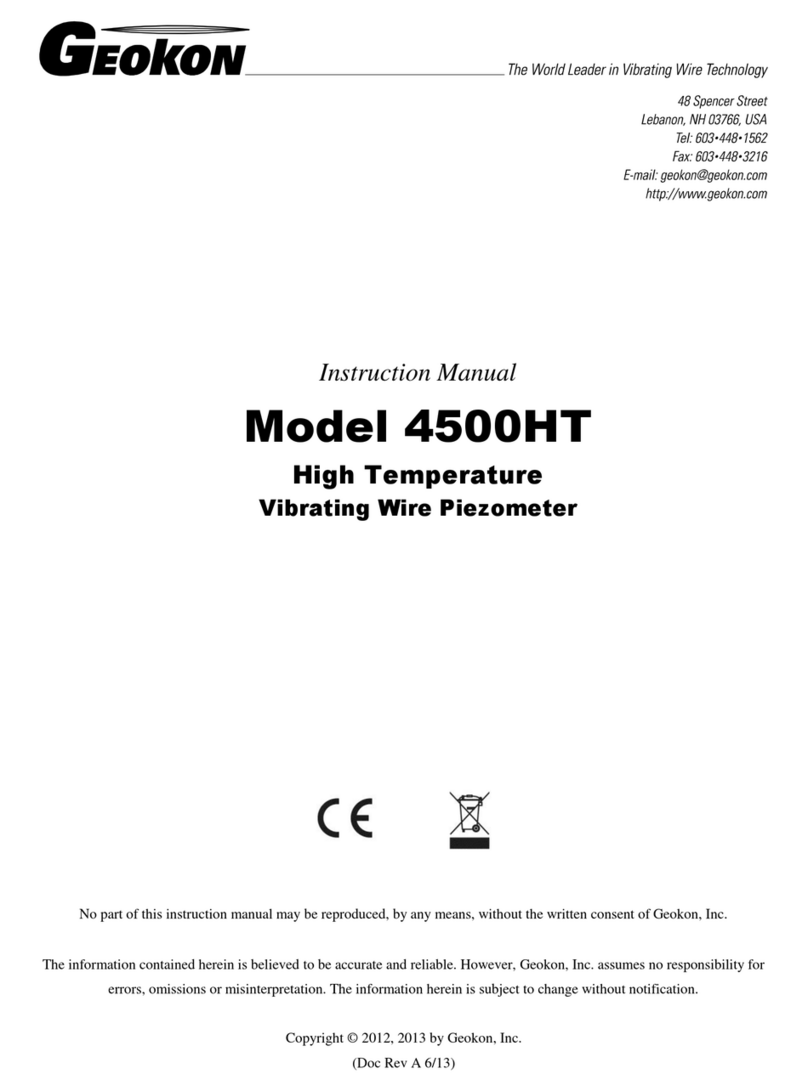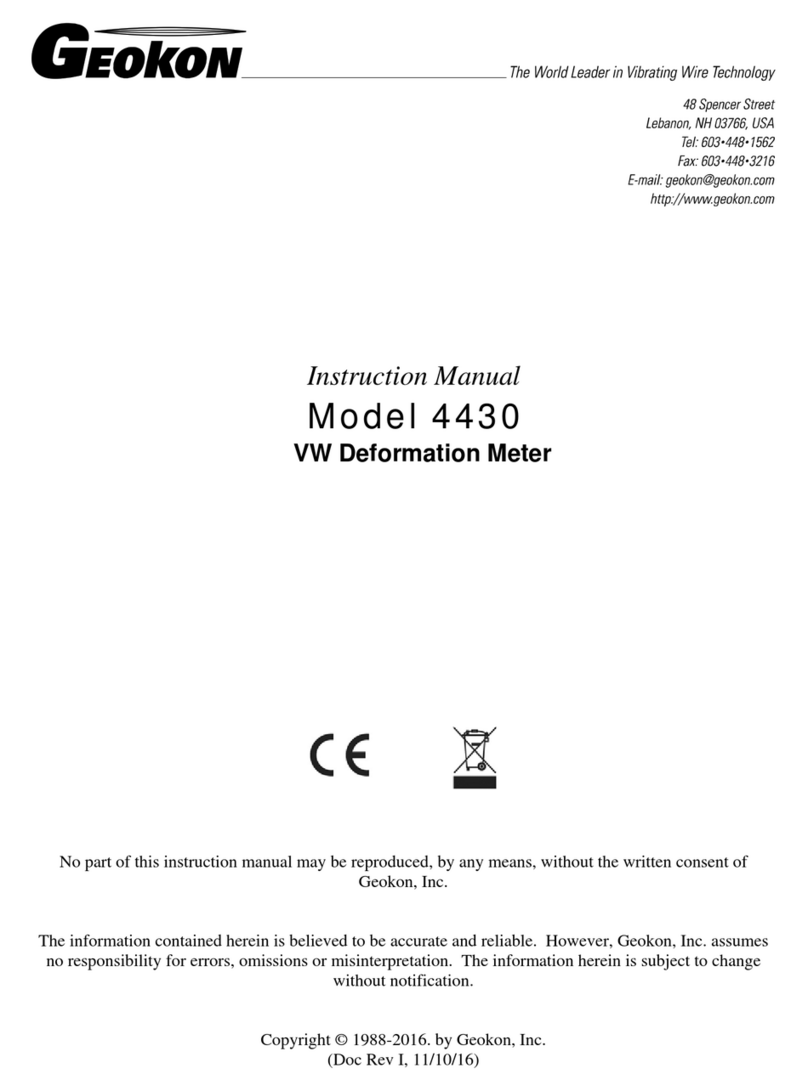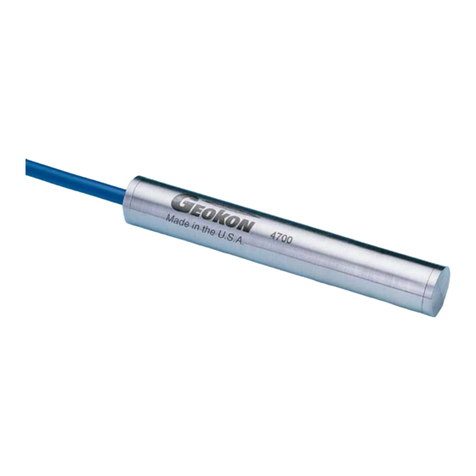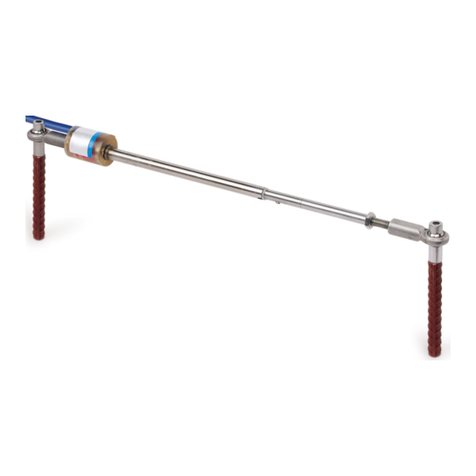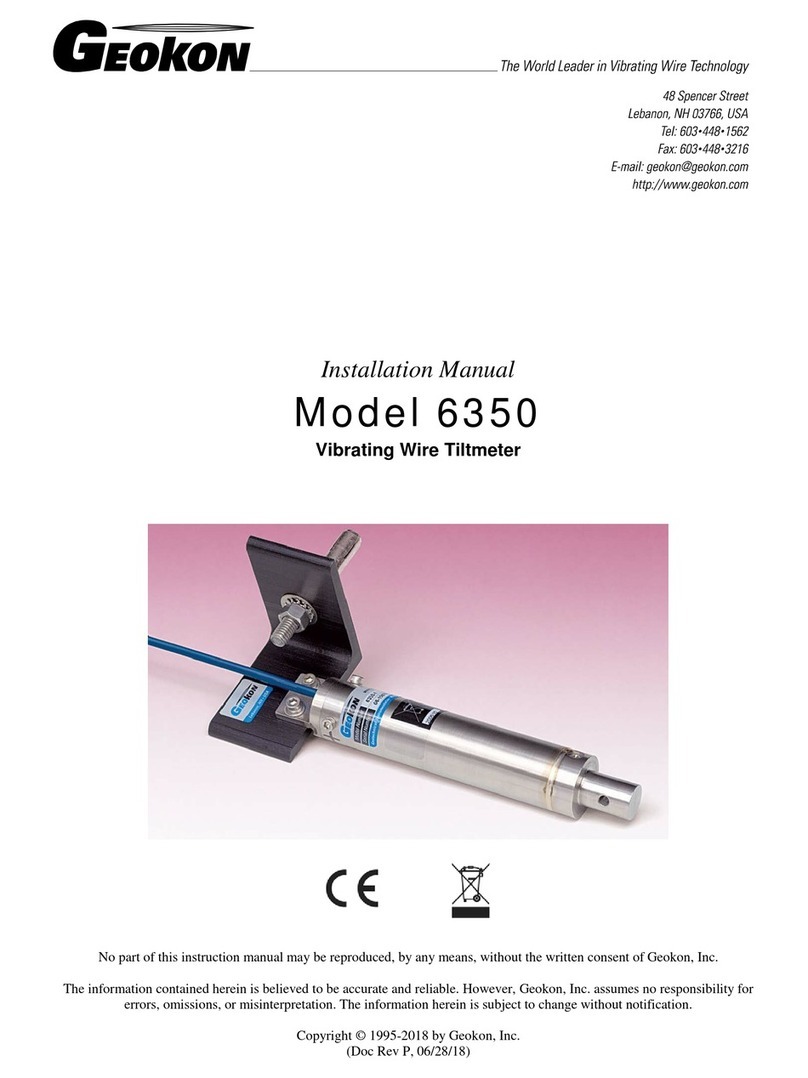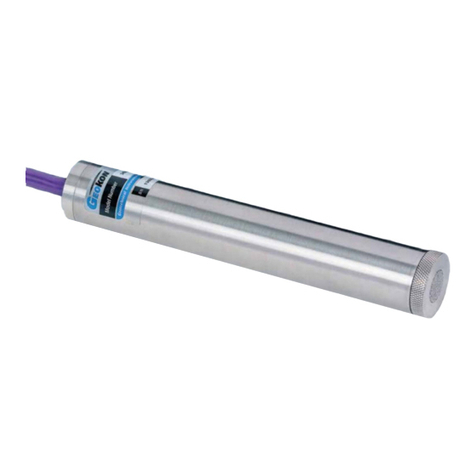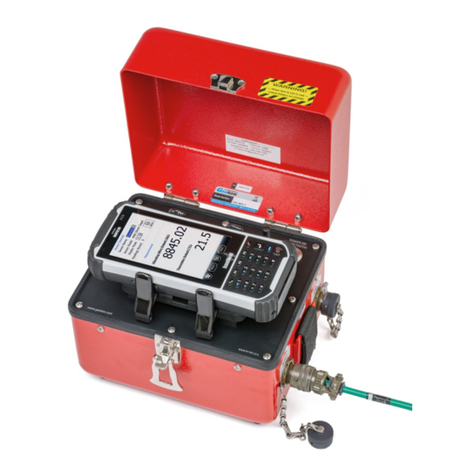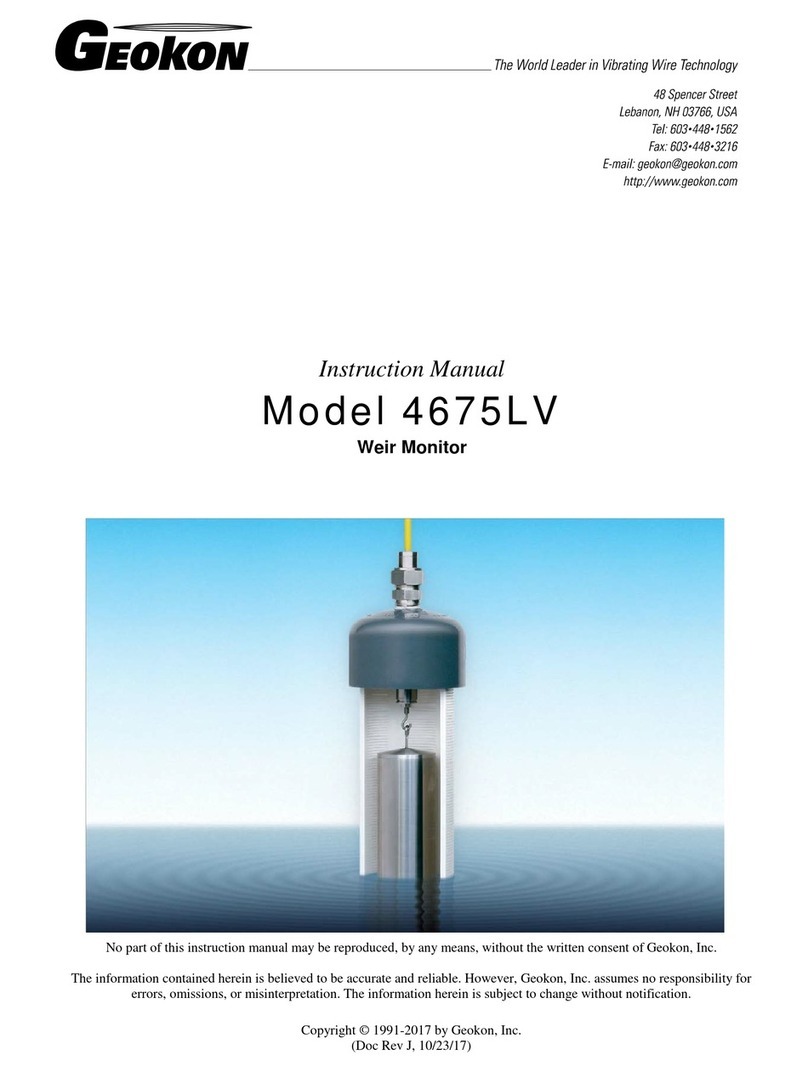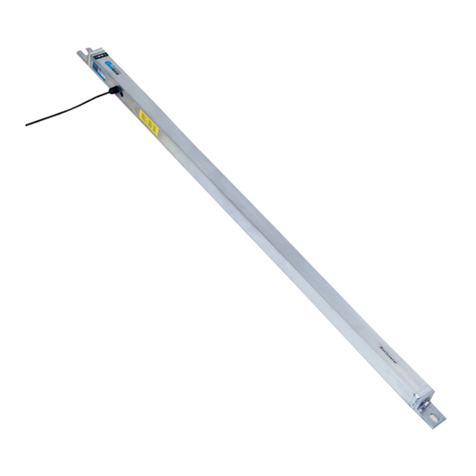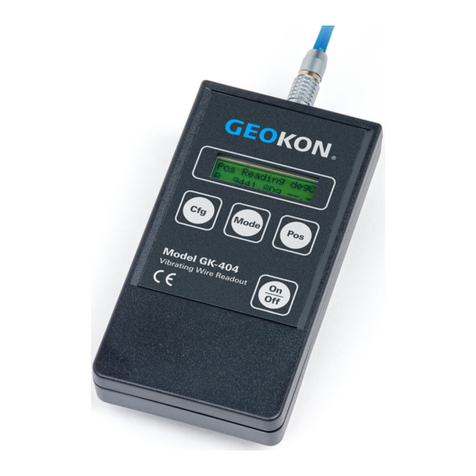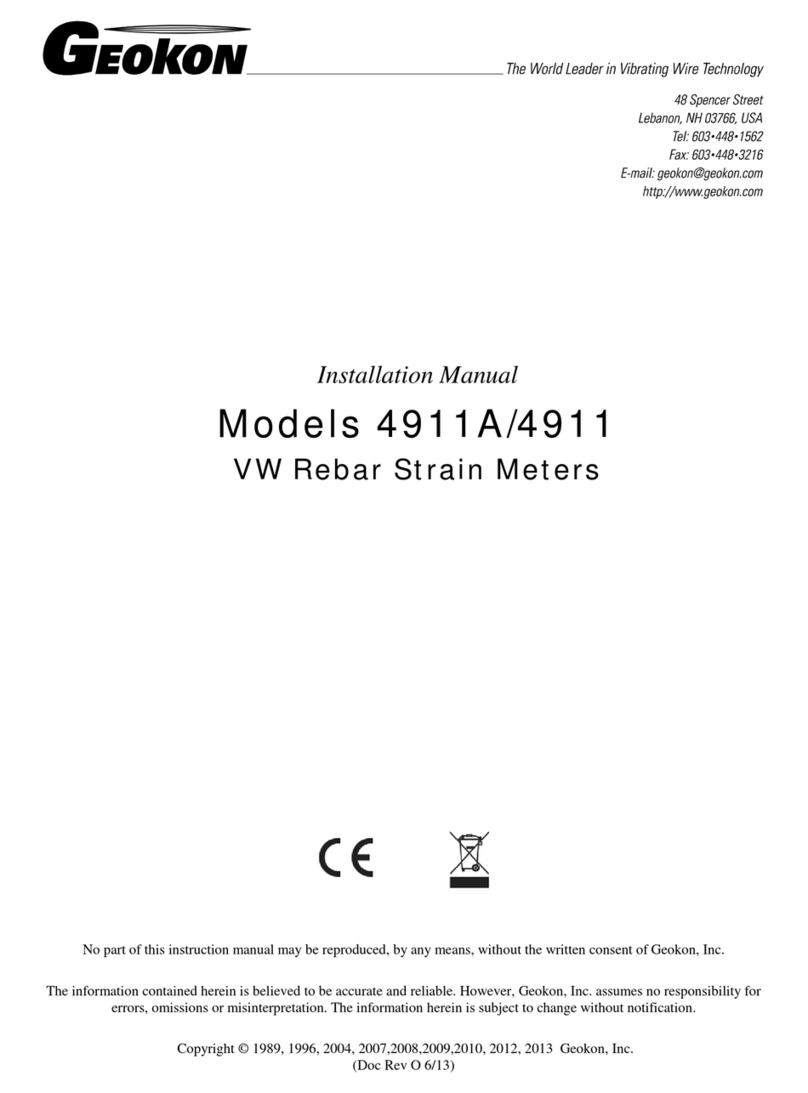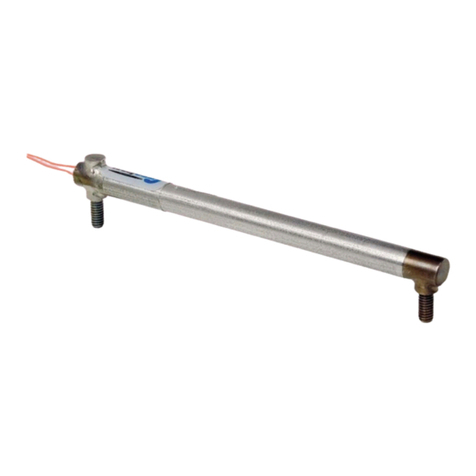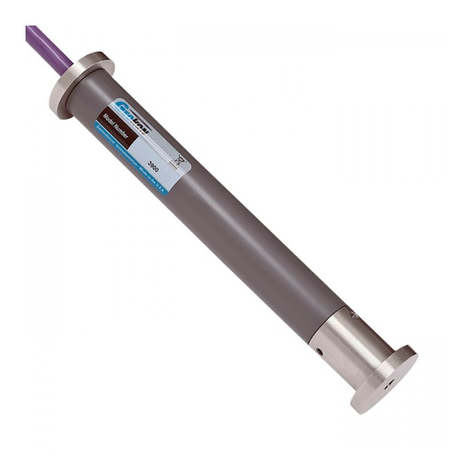
TABLE of CONTENTS
1. INTRODUCTION...................................................................................................................................................1
1.1 THEORY OF OPERATION.......................................................................................................................................1
1.2 EARTH PRESSURE CELL DESIGN ..........................................................................................................................3
1.3 EARTH PRESSURE CELL CONSTRUCTION .............................................................................................................4
1.3.1 Model 4800 Earth Pressure Cells...............................................................................................................4
1.3.2 Model 4810 Contact ("Fat Back") Pressure Cell........................................................................................5
1.3.3 Model 4815 Hydraulic Load Cell ...............................................................................................................5
1.3.4 Model 4820 Earth Pressure "Jackout" Cell................................................................................................6
1.3.5 Model 4830 Push-In Pressure Cell.............................................................................................................6
2. INSTALLATION ....................................................................................................................................................7
2.1 PRELIMINARY TESTS............................................................................................................................................7
2.2 PRESSURE CELL INSTALLATION...........................................................................................................................7
2.2.1 Installation of Model 4800 Earth Pressure Cells Inside Fills and Embankments ......................................7
2.2.2 Installation of Model 4810 Contact ("Fat Back") Pressure Cell ..............................................................10
2.2.3 Installation of Model 4815 Hydraulic Load Cell......................................................................................12
2.2.4 Installation of Model 4820 Jackout Pressure Cell in Slurry Trenches .....................................................13
2.2.5 Installation of Cells to Measure Earth Pressure at the Base of Footings, Floor Slabs, Pavements, Etc..14
2.2.6 Installation of Push-In Pressure Cells to Measure Lateral Earth Pressures............................................15
2.3 CABLE INSTALLATION AND SPLICING ................................................................................................................16
2.4 ELECTRICAL NOISE............................................................................................................................................17
2.5 INITIAL READINGS.............................................................................................................................................17
3. TAKING READINGS...........................................................................................................................................18
3.1 GK-404 READOUT BOX.....................................................................................................................................18
3.1.1 Operating the GK-404 ..............................................................................................................................18
3.2 GK-405 READOUT BOX.....................................................................................................................................19
3.2.1 Connecting Sensors with 10-pin Bulkhead................................................................................................19
3.2.2 Connecting Sensors with Bare Leads........................................................................................................19
3.2.3 Operating the GK-405 ..............................................................................................................................19
3.3 GK-403 READOUT BOX (OBSOLETE MODEL)....................................................................................................20
3.3.1 Connecting Sensors with 10-pin Bulkhead................................................................................................20
3.3.2 Connecting Sensors with Bare Leads........................................................................................................20
3.3.3 Operating the GK-403 ..............................................................................................................................20
3.4 MEASURING TEMPERATURES.............................................................................................................................21
4. DATA REDUCTION ............................................................................................................................................22
4.1 PRESSURE CALCULATION ..................................................................................................................................22
4.2 TEMPERATURE CORRECTION.............................................................................................................................23
4.3 BAROMETRIC CORRECTION ...............................................................................................................................23
5. TROUBLESHOOTING........................................................................................................................................25
APPENDIX A. SPECIFICATIONS.........................................................................................................................27
A.1 EARTH PRESSURE CELLS ..................................................................................................................................27
A.2 STANDARD TEMPERATURE THERMISTOR..........................................................................................................27
APPENDIX B. THERMISTOR TEMPERATURE DERIVATION.....................................................................28
APPENDIX C. HIGH TEMPERATURE THERMISTOR LINEARIZATION..................................................29
APPENDIX D. TEMPERATURE EFFECT ON EARTH PRESSURE AND CONCRETE STRESS CELLS 30
D.1 FORMULAS........................................................................................................................................................30
D.2 EXAMPLES ........................................................................................................................................................33
APPENDIX E. NON LINEARITY AND THE USE OF A SECOND ORDER POLYNOMIAL TO IMPROVE
THE ACCURACY OF THE CALCULATED PRESSURE..................................................................................35

